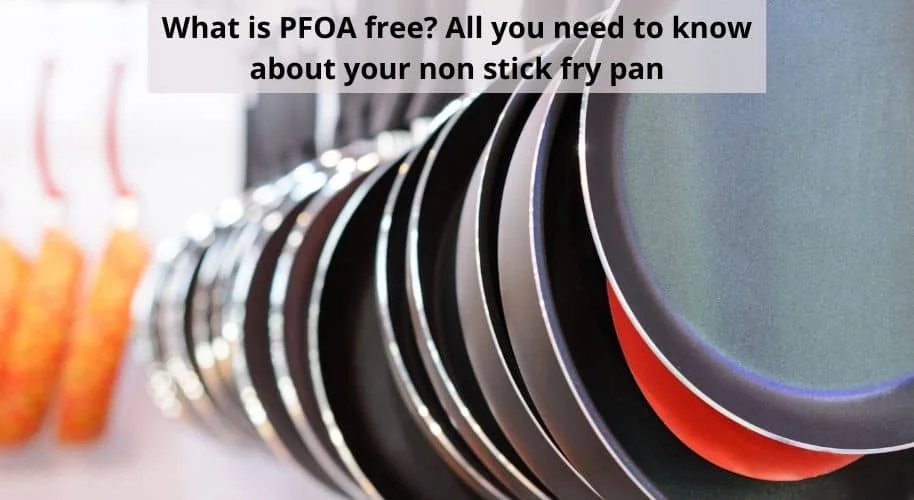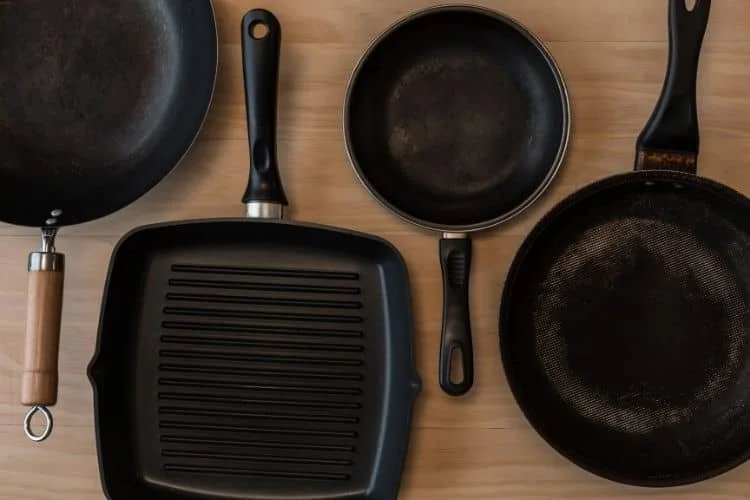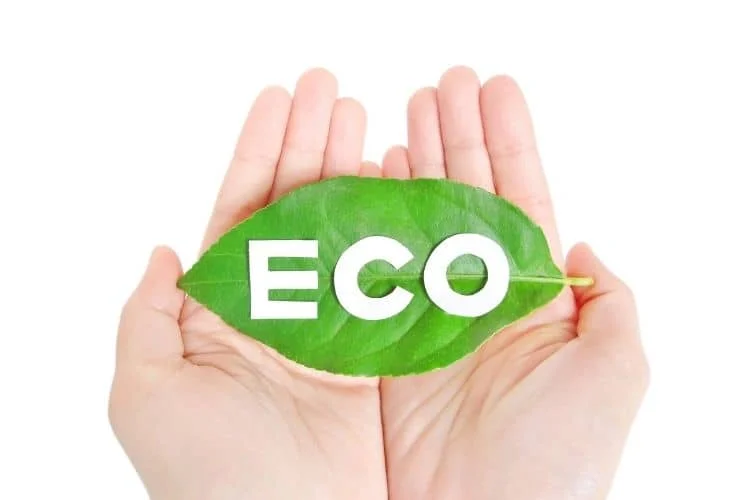We all love our nonstick fry pans because they make cooking easy. But did you know that some of these non stick pans have a chemical called PFOA in them?
This is not great for your health and the environment, so it’s important to find out if your pan is free from this chemical.
Here are some ways to tell: -Does the frying pan say “PFOA Free” on it? -Is there a logo or trademark showing that the product is certified by an independent organization such as Green Seal or EcoLogo? If not, look at the ingredients list on the back of your frying pan.
Here, we’ll discuss what does “PFOA free” mean? Why is it dangerous to humans and animals? And everything you need to know about your nonstick fry pan. So, keep reading!
Here, we’ll learn:
- What is PFOA?
- Whats PFOA free?
- What is non-stick?
- What is Teflon?
- What is PTFE, and why doesn’t it stick to food?
- Is PTFE/Teflon safe?

what does pFOA mean?

PFOA (Perfluorooctanoic Acid), also known as C8, is a chemical used to produce nonstick cookware. This chemical has been linked to various health risks, including cancer and infertility.
This laboratory-created synthetic chemical is designed to endure extremely high temperatures and generate a super non-stick surface.
It was first developed in the late 1940s as an industrial lubricant, but it has since been used to make coatings on cookware such as nonstick cookware, fast food wrappers, and carpets.
Generally, PFOA was used to make Teflon (aka polytetrafluoroethylene), a nonstick coating, invented in 1938 by chemist Roy Plunkett while working for DuPont Company.
But the good news is that the international chemical regulator unanimously voted to ban perfluorooctanoic acid (PFOA), a toxic chemical used in nonstick and stain-resistant coatings for clothing, fast food wrappers, carpets, etc.
Now that all of the nonstick pans we use in our households are PFOA-free since 2015.
what does pFOA free mean?

PFOA free meaning: When a product uses the term “PFOA-free” in its marketing message, it simply means that the nonstick coatings do not contain PFOA in their manufacturing process. And it is completely safe to use.
PFOA is not found in any non-stick fry pan currently on the market, but it could be introduced inadvertently during production problems or through use in food packagings such as fast food wrappers and carpets.
Following a recent study by EWG, DuPont declared that its Teflon products would no longer contain PFOA after 2015 due to environmental concerns about these chemicals.
DuPont is reassuring consumers using the Teflon brand that they are safe. “Cookware coated with DuPont Teflon non-stick coatings does not contain PFOA,” said Cliff Webb, spokesman for DuPont.
What is PFOA free cookware?
PFOA free cookware is cookware that does not contain perfluorooctanoic acid (PFOA). PFOA is a synthetic chemical that has been linked to various health concerns. While it is not yet known definitively whether or not PFOA exposure is harmful, many people prefer to err on the side of caution and use PFOA-free cookware.
So when you see “PFOA free” on a piece of cookware means that the non-stick coating wasn’t made using the chemical PFOA (usually PTFE or related plastic).
What is non-stick?
A coating that makes it difficult for food to stick to a surface, usually aluminum or other metal cookware coated with polytetrafluoroethylene (PTFE), also known as Teflon and sometimes called enameled cast iron. Non-stick coatings are usually applied to cookware surfaces before they are put into use.
Our Easy Kitchen Guide experts have reviewed the best non stick pan for scrambled eggs. These pans are PFOA free and make great fluffy scrambled eggs. If you love scrambled eggs for your breakfast, this article will be handy for you.
What is Teflon?
Teflon is a brand name for the chemical coating, polytetrafluoroethylene, also known as PTFE, invented by Roy J. Plunkett at the DuPont Company’s Jackson Laboratory in 1938 to create a non-reactive, nonstick surface.
Non-stick cookware was one of its first commercial uses, but it can also be used to coat other materials like wires or fabrics to make them waterproof.
What is PTFE, and why doesn’t it stick to food?
PTFE stands for polytetrafluoroethylene, also known as Teflon or by the chemical name of C8. This substance has a low co-efficient of friction which means that if one thing rubs against another, it does not stick together.
Is PTFE/Teflon safe?
We’ve mentioned earlier that nonstick coatings are made from an artificial chemical called PTFE or Teflon to prepare and wash food quickly. Several health agencies have raised concerns about PFOA, which is previously used to make Teflon.
However, Teflon has been completely PFOA-free since 2013. So, today’s nonstick and Teflon cookware is completely safe for daily home cooking as long as the temperature does not exceed 570 F (300 C).
So you should use your nonstick cookware on the stovetop at low-to-medium heat, but don’t use it on high heat methods or cook at higher temperatures like cooking under the broiler.
Wrapping up:
Thanks for reading this article. Now you know a little more about PFOA free and how to identify it. To sum up, we just want to mention again that PFOA is a chemical used in non-stick coatings for pots and pans since the 1950s.
It was only recently discovered toxic, with health effects ranging from lung cancer to low birth weight babies.
Luckily, all manufacturers have already stopped using it on their products – All Teflon nonstick cookware is 100% safe to use and toxic-free.
The good news is most of these companies are also making safe alternatives such as ceramic coated cast iron fry pan sets which can last longer than traditional Teflon coating!
You don’t have to worry about your food sticking anymore because they’re easy to clean up after cooking too! If you have any questions about cookware or PFOA, please leave a comment below.
Also, share this article with your friends and family with this helpful information so that they can enjoy their cooking experience without any worries.
My name is Lori Walker. I’m a registered dietitian, food blogger and food enthusiast. I share easy healthy, delicious recipes on my blog and review necessary kitchen items. The recipes I share take less… Read more

Great article. However please remove the exclusive knuckle-dragging sexist term of ‘man-made’ and replace it with something that also reflects caring for all of human-kind. Thank you. ?
Thanks for your feedback, Lynn. I’ve already replaced it. Thank you.
Great article with info that I had wondered about. Especially the 2015 Moratorium which I had not found. I have replace everything with ceramic years ago. Thats all this ‘knuckle dragger’ has to say. Pretty funny Lynn’s comment used a derogatory term to ask for not using a derogatory term. People need a life.